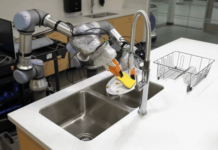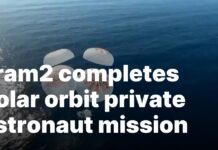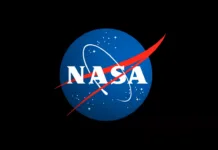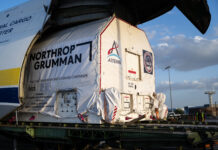NASA’s Artemis II Mission: A New Milestone in Lunar Exploration
On December 16, 2024, a unique gathering took place inside the iconic Vehicle Assembly Building at NASA’s Kennedy Space Center in Florida. It was a day filled with anticipation and excitement as astronauts from both the Canadian Space Agency (CSA) and NASA came together for a media event, marking an important step forward in space exploration. Among those present were CSA astronaut Jenni Gibbons, NASA astronaut Andre Douglas, CSA astronaut Jeremy Hansen, and NASA astronauts Christina Koch, Victor Glover, and Reid Wiseman. Gibbons and Douglas are notable for their roles as backup crew members for the Artemis II mission, a pivotal project under NASA’s ambitious Artemis campaign.
Understanding the Artemis II Mission
The Artemis II mission represents NASA’s first crewed expedition under the Artemis program, which aims to return humans to the Moon and eventually pave the way for deeper space exploration. Scheduled to last ten days, this mission will involve a journey around the Moon, testing the systems and capabilities needed for future lunar missions. This mission is more than a venture into space; it’s a significant move towards sustainable human exploration of the Moon.
The Importance of Backup Crew Members
In any space mission, the role of backup crew members is critical. They are not only alternate astronauts ready to step in if needed, but they also contribute significantly during the preparation stages. Jenni Gibbons and Andre Douglas, as backup crew members for Artemis II, play crucial roles in ensuring the mission’s success. Their training and readiness are vital, as they must be prepared to take over any responsibilities at a moment’s notice, ensuring that the mission proceeds smoothly even if unforeseen challenges arise.
A Brief History of the Artemis Program
The Artemis program is named after the Greek goddess of the Moon and the twin sister of Apollo, a fitting tribute as it follows the historic Apollo missions that first landed humans on the Moon. This modern initiative by NASA is not just about revisiting the Moon but aims to establish a sustainable human presence there by the end of this decade. This program is designed to explore more of the lunar surface than ever before, using innovative technologies and international partnerships.
Technical Aspects of the Artemis II Mission
For those not familiar with space missions, Artemis II is essentially a test flight. It is designed to ensure that all systems are functioning correctly before embarking on more complex missions. The spacecraft used for this mission will be the Orion spacecraft, a state-of-the-art vehicle developed by NASA to carry astronauts into deep space. The Orion spacecraft is equipped with advanced safety features and life support systems to ensure the crew’s well-being during their journey around the Moon.
The Space Launch System (SLS) rocket will propel the Orion spacecraft into space. The SLS is one of the most powerful rockets ever built, designed to carry astronauts and cargo beyond Earth’s orbit. Its development is a significant leap forward in rocket technology and a crucial component of the Artemis missions.
The Role of International Collaboration
One of the defining features of the Artemis program is its emphasis on international cooperation. The inclusion of Canadian Space Agency astronauts like Jenni Gibbons and Jeremy Hansen highlights the collaborative nature of this mission. Such partnerships are essential for pooling resources, sharing expertise, and advancing scientific knowledge. This collaboration also fosters goodwill and strengthens ties between nations, making space exploration a truly global endeavor.
Looking Ahead: The Future of Lunar Exploration
The Artemis II mission is just the beginning. As NASA and its partners prepare for future missions, the focus will be on landing the first woman and the next man on the Moon’s surface. These missions aim to explore new regions of the Moon, study its resources, and lay the groundwork for future missions to Mars and beyond.
The Artemis program also seeks to inspire a new generation of scientists, engineers, and explorers. By pushing the boundaries of what is possible, NASA hopes to ignite curiosity and passion for space exploration across the world. This mission is not just for those involved directly but for everyone who dreams of reaching for the stars.
Public Reactions and Expectations
The announcement of the Artemis II mission has generated excitement and expectations worldwide. Many see it as a bold step towards a new era of space exploration, reminiscent of the Apollo missions that captivated the world in the 1960s and 70s. The involvement of international astronauts adds an element of global unity, showcasing space exploration as a collective human endeavor.
Space enthusiasts and experts alike are eagerly anticipating the success of Artemis II, viewing it as a critical step in achieving the broader goals of the Artemis program. The mission’s success could lead to unprecedented scientific discoveries and technological advancements, benefiting humanity as a whole.
Conclusion: A Journey of Hope and Discovery
As the world watches the preparations for Artemis II, there is a palpable sense of hope and anticipation. This mission is more than a technical achievement; it is a symbol of human ingenuity and the relentless pursuit of knowledge. It reminds us of our ability to explore, discover, and push beyond our limits.
In conclusion, the Artemis II mission is a landmark moment in the history of space exploration. It promises to bring us closer to understanding our celestial neighbor, the Moon, and sets the stage for future explorations of our solar system. As we look to the stars, we are reminded of the boundless possibilities that lie ahead, waiting to be discovered.
For more Information, Refer to this article.


































